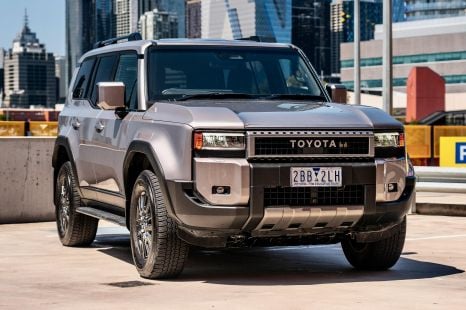

Max Davies
2025 Toyota Prado GXL review
2 Months Ago
The Prado is still Australia's favourite large SUV, even in the face of newer, fresher rivals. Does it still deserve that title?
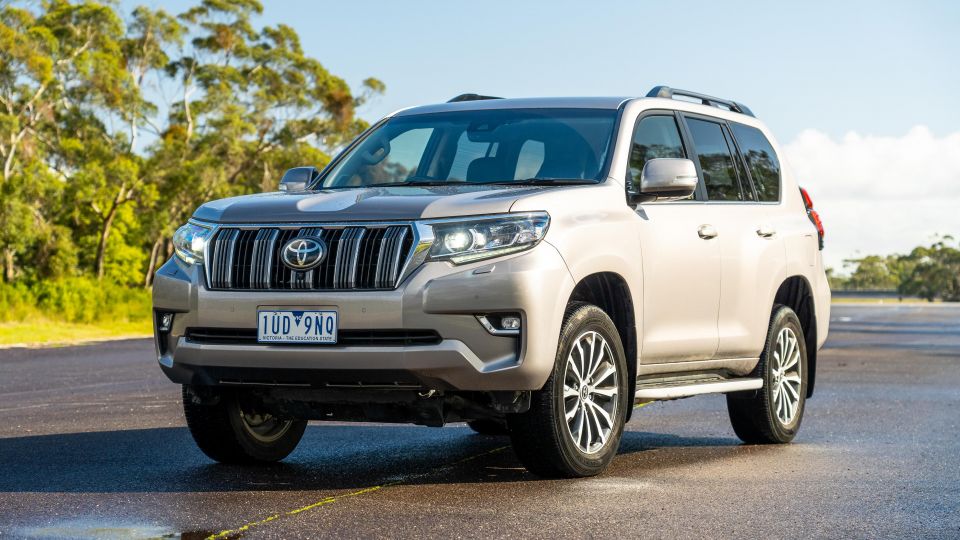
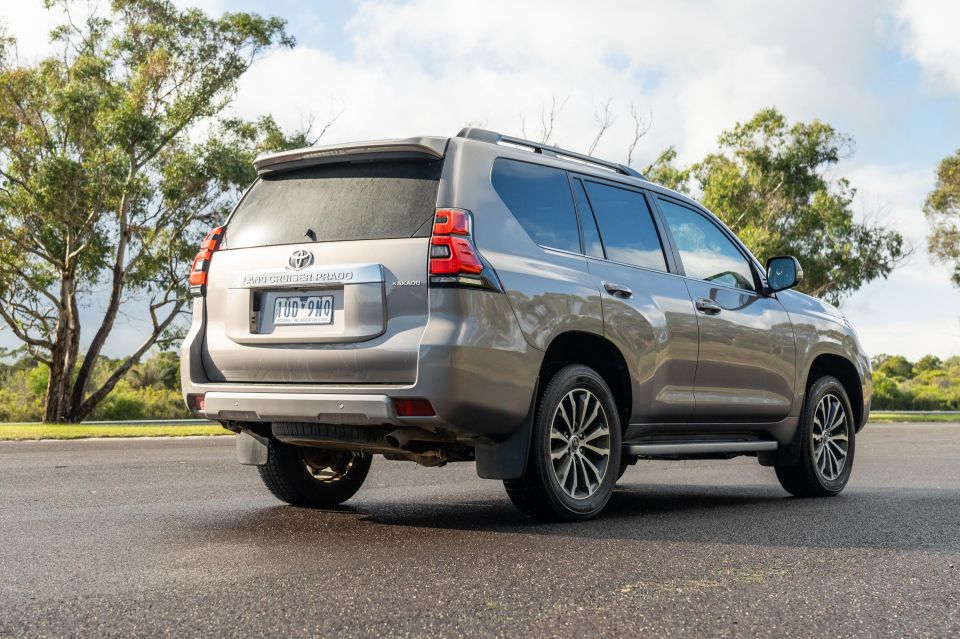

Quickly see how this car stacks up against its competition. Select any benchmark to see more details.
Where expert car reviews meet expert car buying – CarExpert gives you trusted advice, personalised service and real savings on your next new car.
The Toyota LandCruiser Prado has been sitting pretty for some time now.
Despite its age, it’s still the best-selling vehicle in its segment, and continues to fend off newer, fresher rivals like the latest Isuzu MU-X.
During the run of the current generation, launched in 2009, only two vehicles have genuinely given it a run for its money in the sales race besides Toyota’s own Kluger. These were the Ford Territory, which has since been retired, and the Jeep Grand Cherokee, which is unlikely to best it again given it’s petrol-only in a segment where diesel is king.

The Prado’s spot at the top has been guaranteed by Toyota’s generally strong reputation, expansive dealer network, and the fact this body-on-frame SUV doesn’t look like it’s ute-based – something that can’t be said for the likes of the Isuzu MU-X and Toyota’s own Fortuner.
It’s also recently been given a shot of adrenaline in the form of an uprated 2.8-litre turbo-diesel engine, giving it more power and torque.
Even though a new Prado is still a few years away, the current car should continue its run atop the sales charts, right?
Perhaps not. There’s a new rival in the form of the redesigned Ford Everest, now packing an available turbo-diesel V6 like the old Territory. We’ll pit these two against each other in due course, but let’s see if the Prado – in isolation – still deserves its vaunted status as Australia’s favourite large SUV.
While its LandCrusier 300 Series big brother wears the faraway Sahara ZX nameplate in top-spec trim, the top-spec Prado wears a name closer to home: Kakadu.
It’s priced at $86,998 before on-road costs, regardless of whether you select the ‘flat’ tailgate or the one with the spare tyre mounted on it.
That’s just over $10,000 more than the next rung down, the Prado VX, as well as the flagship Ford Everest Platinum ($77,690 before on-roads), though it’s $2183 less than the larger Toyota LandCruiser 300 Series in base GX guise and $992 less than a mid-range Jeep Grand Cherokee L Limited.
The Kakadu’s price also puts it well above other ute-based rivals like the Isuzu MU-X LS-T ($67,400 before on-roads), and slightly above the base Nissan Patrol Ti ($82,160 before on-roads) from the segment above.
With the $675 metallic paint added and based on a Sydney postcode, our Kakadu tester rang up at $94,787 drive-away.
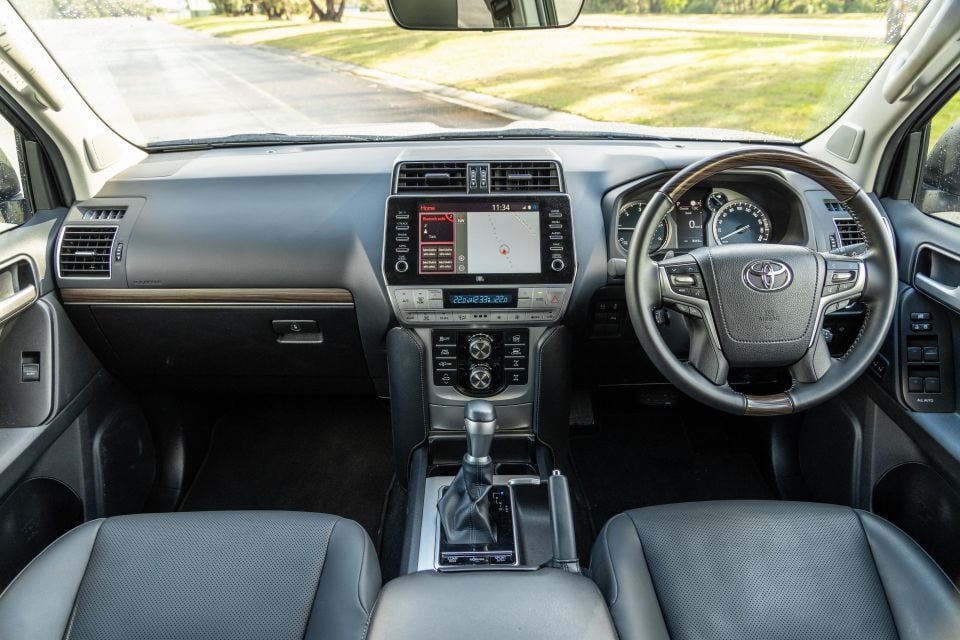
The Prado’s interior isn’t the most cutting-edge on the market, but it still has its charm.
Material quality generally surpasses its more affordable ute-based competition – as well it should – and there’s a more premium feel to the Prado’s surfaces than rivals like the Everest and Grand Cherokee, even if it has a more dated look overall.
Soft-touch trim is used on top of the dash, with leatherette trim down the side of the centre stack if not on the sides of the centre console. At least the latter isn’t too bulky and intrusive and, while the Kakadu doesn’t quite feel Lexus-grade inside, it’s certainly far removed from a Fortuner.
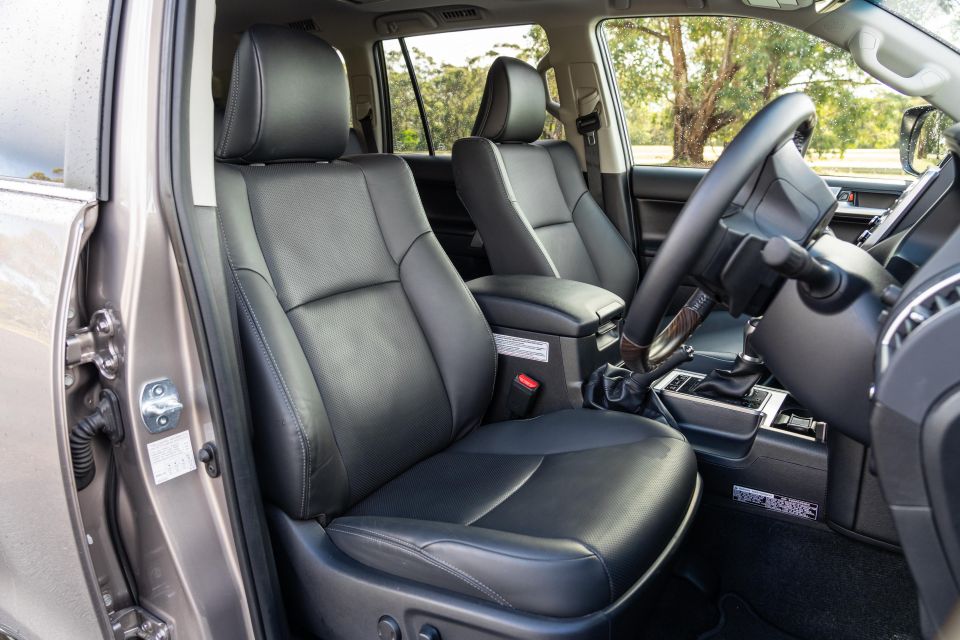
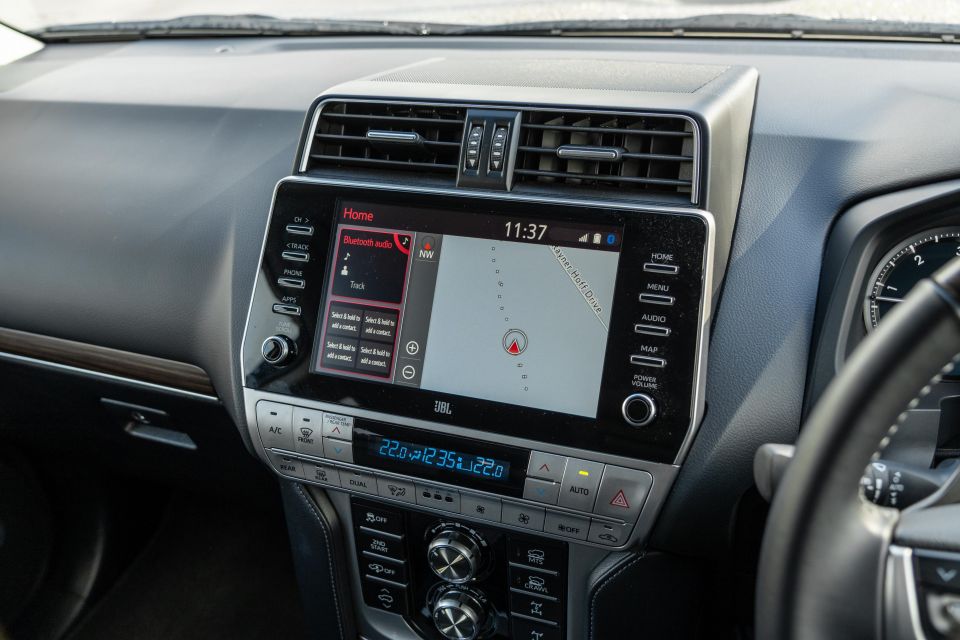
There’s wood trim for contrast, as well as swathes of silver-painted plastic. Wood can also be found on the steering wheel, along with tactile leather wrapping, and while Toyota has employed some gauche faux wood before, the plastic tree in the Kakadu is relatively convincing. You can also opt for a beige interior which is light and airy and has even more of a premium look.
The touchscreen is positioned prominently on the centre stack without looking like a tablet-style afterthought, and there are hard shortcut buttons on either side.
There’s wired Android Auto and Apple CarPlay but, while this isn’t the worst infotainment system in the segment, its interface is showing its age against rivals from Ford and Jeep.
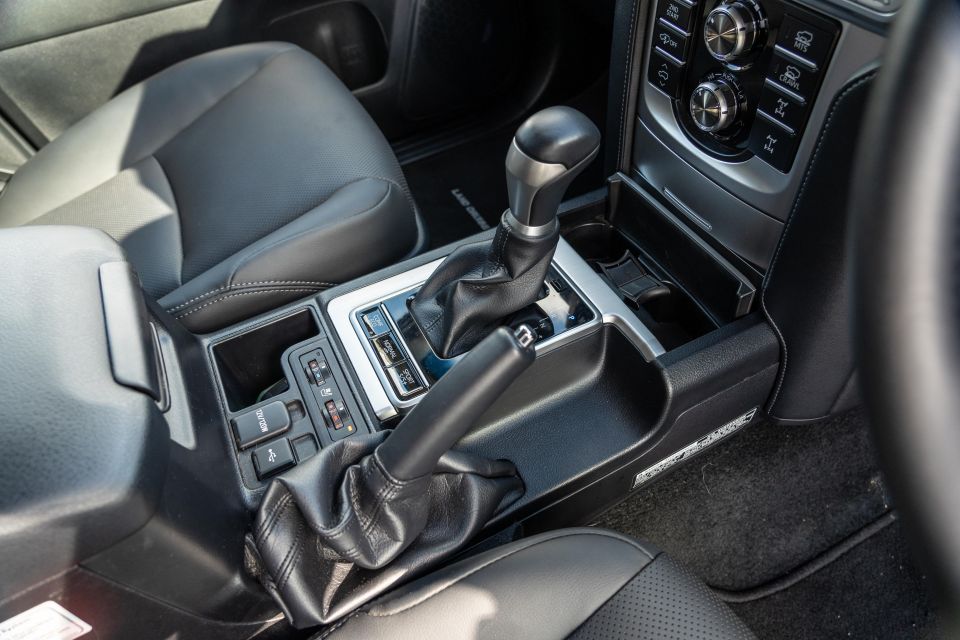
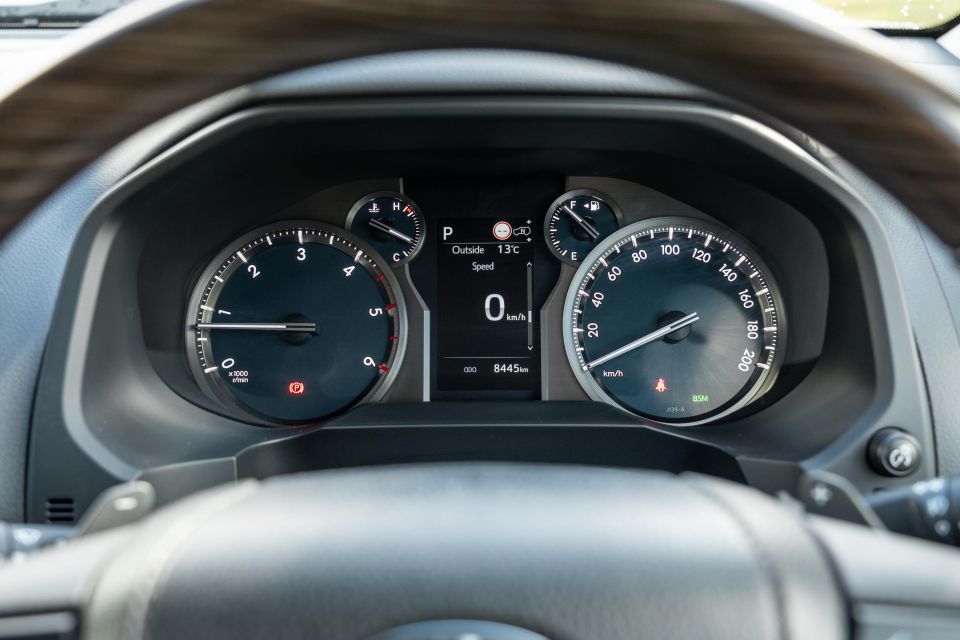
That also applies to the camera footage, which is pixellated and washed-out – street lights appearing on the camera have a halo effect like you’ve just popped a couple of eyedrops in.
We were also flummoxed by the lack of available adjustment for voice prompt volume. In most cars, you can press the volume up/down buttons while a prompt is playing to adjust it, but in our tester these were stuck at a fixed volume.
We appreciate, from a usability point of view, the Prado’s use of large, clearly labelled buttons on the centre stack. But these large print edition buttons take up space, which has forced Toyota to stash some of the switchgear in odd places, like the camera view button to the left-hand side of the steering wheel.
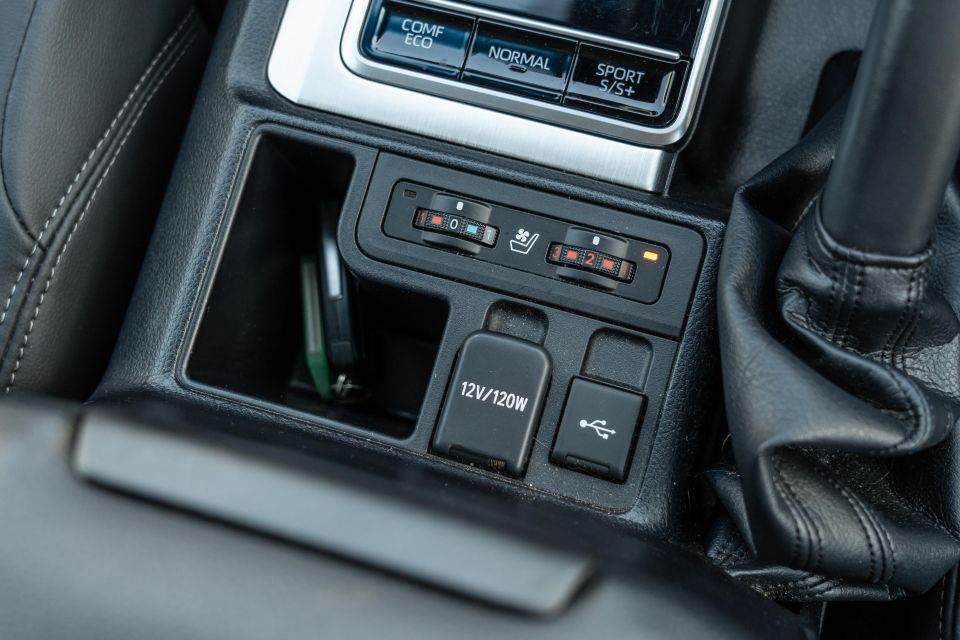
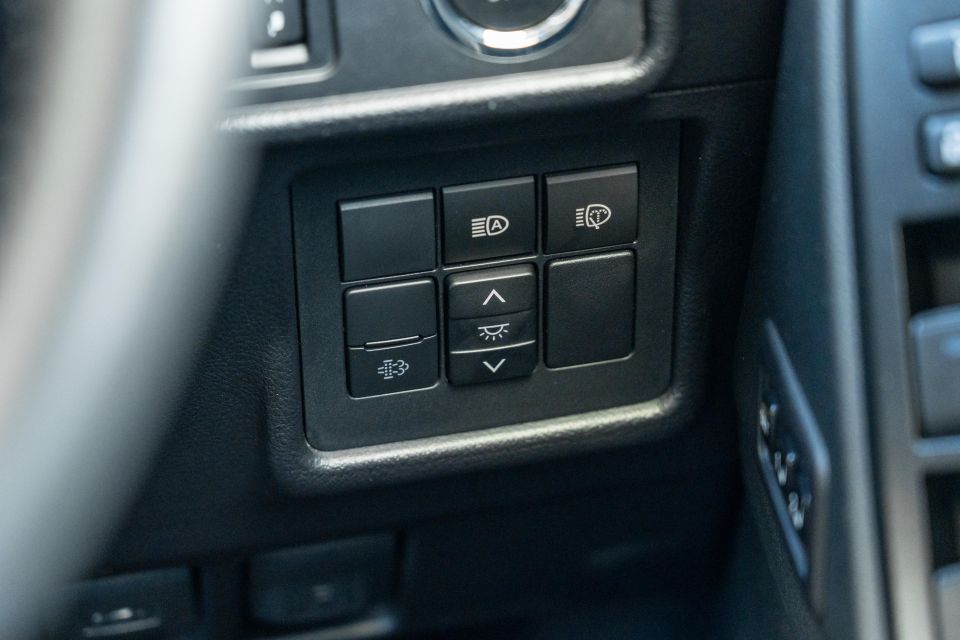
Speaking of switches you may have difficulty finding, the mirror controls are located not on the doors but on the right-hand side of the steering wheel. At least the climate controls are positioned prominently on the centre stack.
The Prado’s cabin shows its age in some areas. There’s no head-up display, for example, while the shifter looks like it’s out of the Toyota parts bin circa 2006.
There’s no electronic parking brake either, which is either a pro or a con depending on your stance.

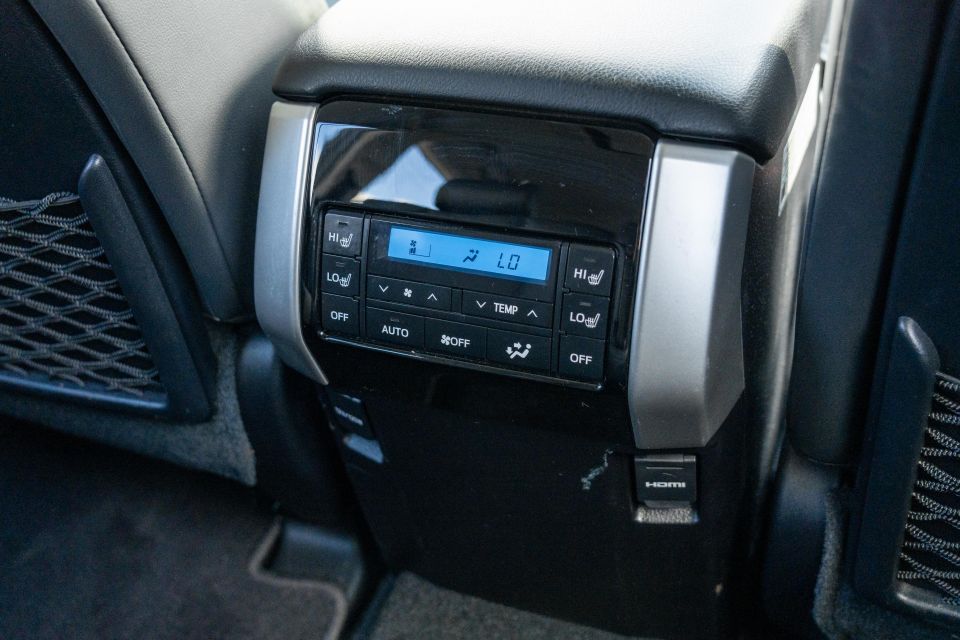
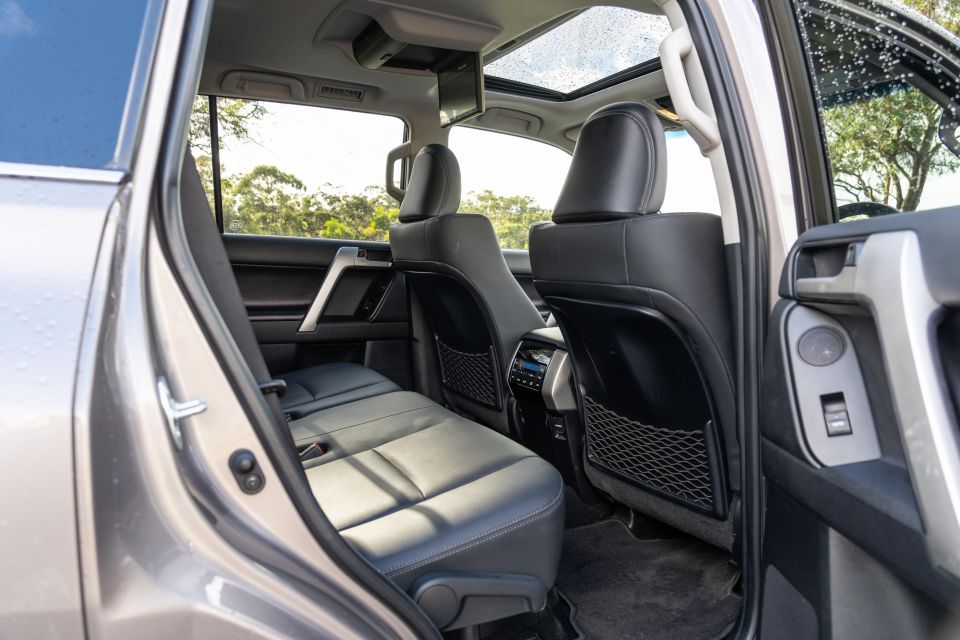
The Kakadu has a JBL 14-speaker sound system, but sound quality is nothing spectacular. There’s also a serious lack of USB outlets in the cabin compared to more modern rivals.
The analogue instruments are quite attractive and legible, while there’s an inoffensive 4.2-inch digital screen between them. It was annoying to find the digital speedometer sometimes is hidden, particularly as there’s no head-up display.
There’s a cavernous centre console cooler box up front – an excellent idea – and bottle holders in the doors that can fit 1.5L bottles. There’s a strange L-shaped cavity on the centre console that you can stand most mobile phones up in, as well as cupholders at the base of the centre stack.
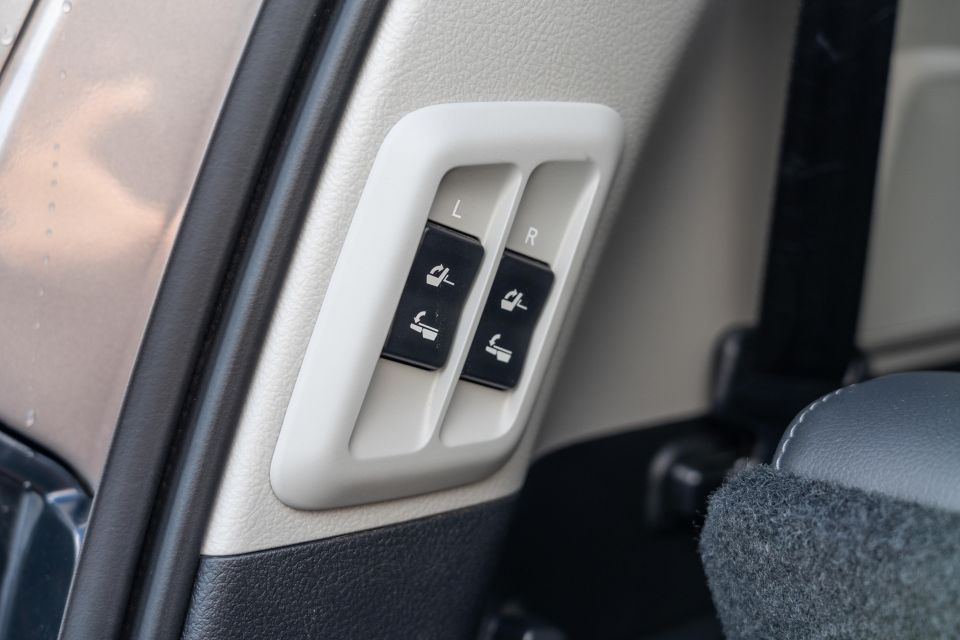

The front seats don’t appear especially bolstered, but they proved quite comfortable and supportive over long distances. Our second-row occupants opined, however, the seat base back there is a bit too short for those with longer legs.
Second-row occupants have a HDMI port and a 12V outlet, as well as an array of switches for adjusting the climate control and heated seats but no USB outlets. There are, however, dual screens for playing Blu-rays, plus three pairs of wireless headphones.
I’m 180cm tall and I could technically fit in the third row, but I wouldn’t want to be there for long – my head was against the roof and my knees against the seatbacks, though the second row can be slid forward to free up more space.
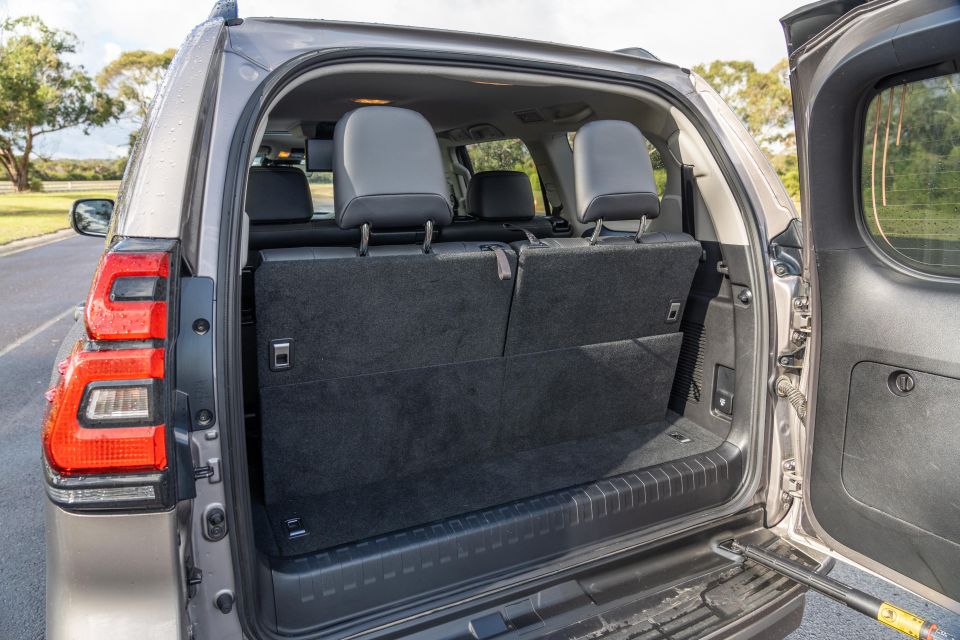

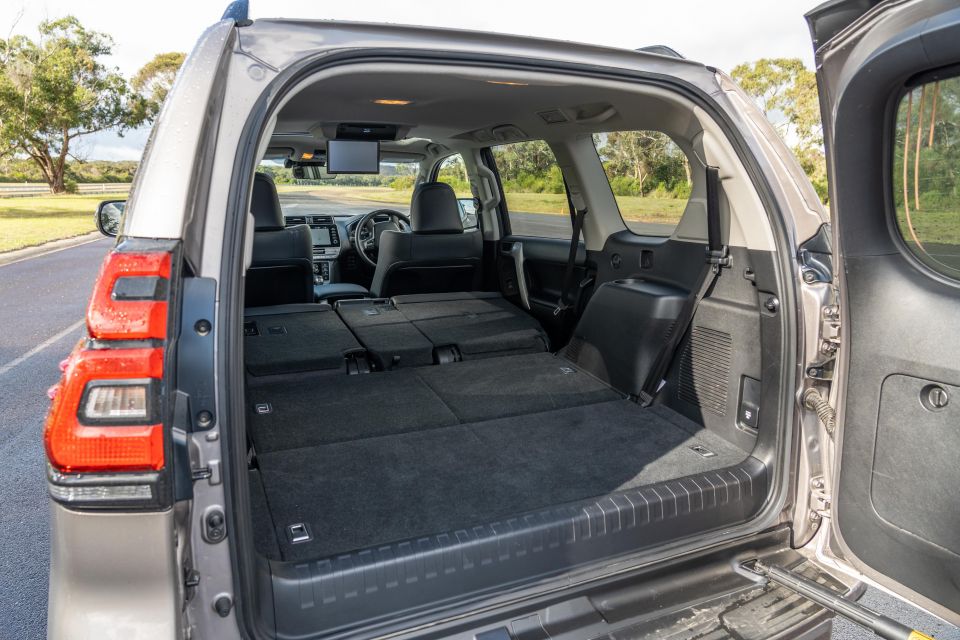
The third row features power folding and reclining, though there are no amenities back there besides a pair of cupholders. The cargo bay also features a 230V outlet.
Boot space is virtually non-existent with the third row up – there’s just 120L – while the rear-most seats are slow to fold. Doing so increases cargo space to 620L, while there’s a total of 1833L with the second row also folded flat.
For the most precious cargo of all, you’ll find three top-tether and two ISOFIX child seat anchor points in the second row. There are none in the third row.
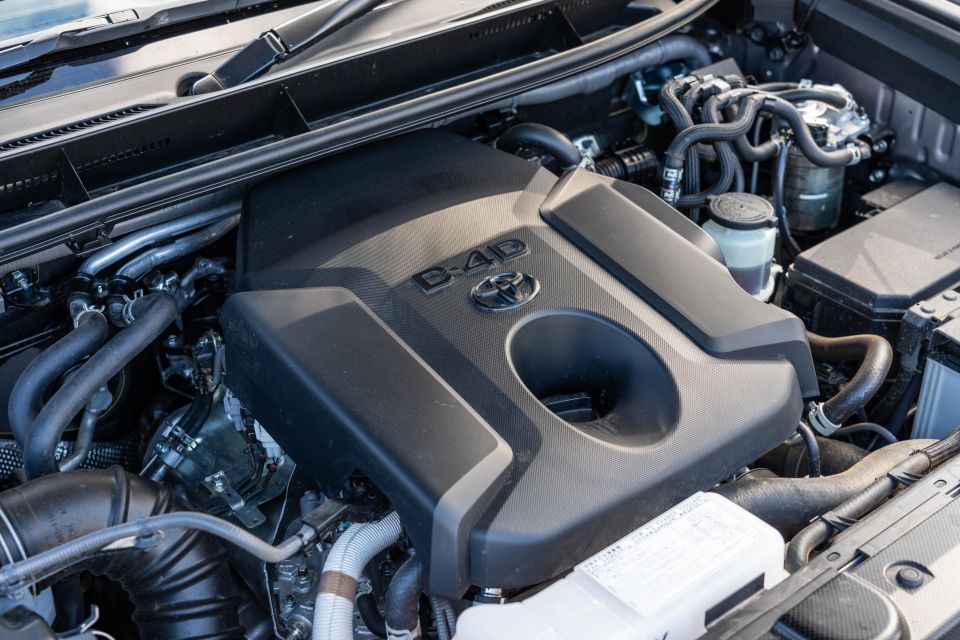
The Kakadu is powered by the same 2.8-litre turbo-diesel four-cylinder engine as the rest of the Prado range, as well as models like the HiLux and Fortuner.
This produces 150kW of power at 3000-3400rpm and 500Nm of torque between 1600 and 2800rpm, and power is sent to all four wheels through a six-speed automatic transmission. The four-wheel drive system features a full-time mode, as well as selectable low-range.
The Australian-market Prado lost its petrol option in 2018 when Toyota dropped the 4.0-litre V6. Interestingly, there’s a closely related Lexus GX460 available in markets like North America which packs a 4.6-litre 224kW/446Nm petrol V8.
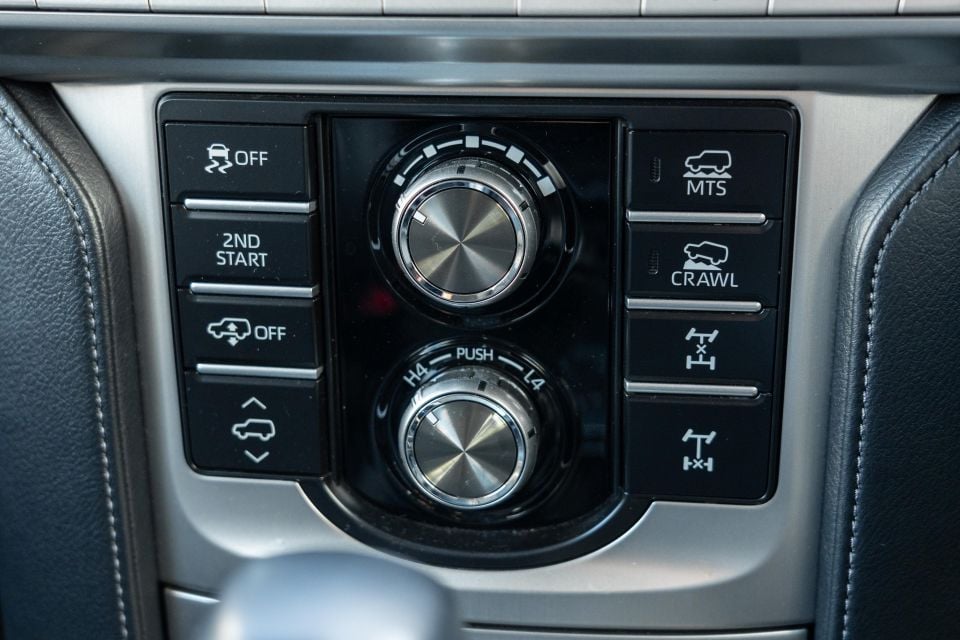
Over a mix of inner-city, suburban and highway driving, we averaged 8.9 litres per 100km. This increased to 9.6 litres per 100km over the course of a week, which included a trip from Melbourne to Victoria’s High Country and back.
The official combined cycle claim is 7.9 litres per 100km, and the Prado has an 87L fuel tank. Models with the tailgate-mounted spare include an additional 63L tank, bringing total capacity to 150L.
Braked towing capacity is 3000kg, which falls short of the 3500kg claims of the MU-X and Everest.

The Prado’s turbo-diesel engine got a much-needed boost in power and torque in 2020, bringing it almost exactly in line with the Ford Everest’s bi-turbo four-cylinder.
Of course, the game has changed since then. While the Jeep Grand Cherokee has dropped its turbo-diesel V6, the Everest has gained one and its outputs of 184kW and 600Nm put it comfortably ahead of the Prado.
Not that the Prado is gutless, mind you, as it’s decently responsive – though we’ve only recorded 0-100km/h times in the 10.5-11 second range.
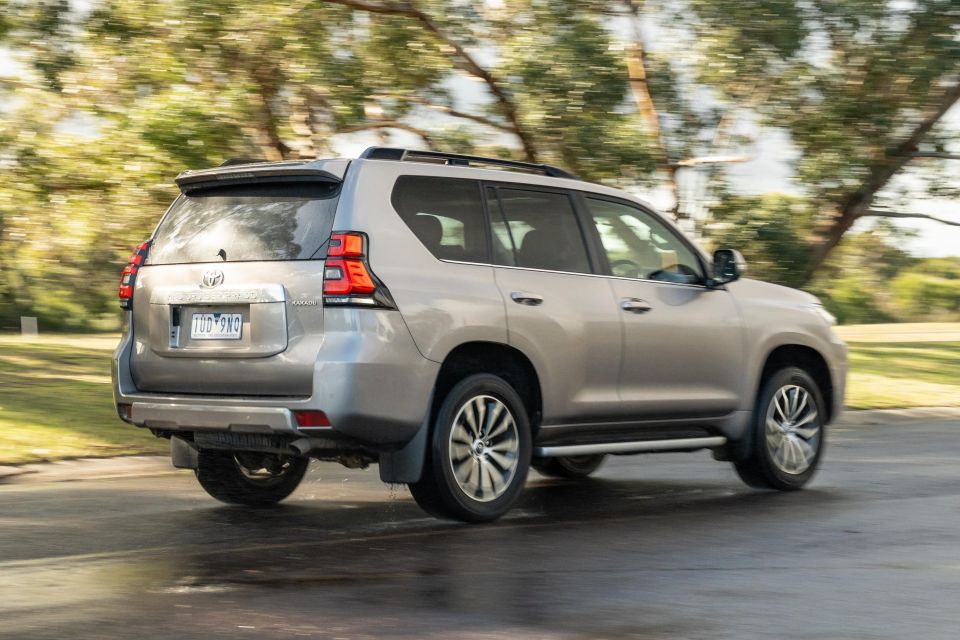
I took the Prado on a weekend trip to Victoria’s High Country with three other adults and it never felt underdone, even on steep, winding roads or while overtaking on highways.
Credit also goes to the six-speed automatic transmission which, while down a few cogs on the likes of the Everest, proved quite capable of harnessing the Prado’s outputs. It shifts smoothly and doesn’t hunt around for gears.
The Toyota is no rocketship, but there’s sufficient torque on hand that ensures you don’t have to wring it too hard to get the most out of it.
Toyota offers Sport and Sport+ drive modes for greater responsiveness but there’s not a massive difference in feel.
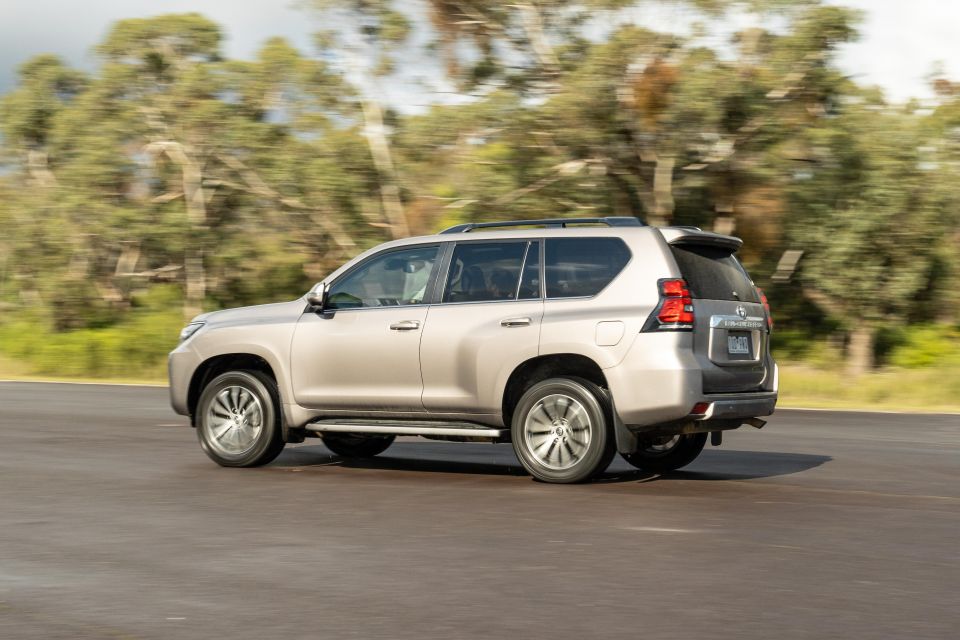
Where expert car reviews meet expert car buying – CarExpert gives you trusted advice, personalised service and real savings on your next new car.
The standard diesel clatter is fairly well-contained, and the Prado’s cabin proves quiet even at highway speeds.
The steering strikes a decent balance between feeling overly heavy, like that in the Mitsubishi Pajero Sport, or feather-light like the larger Nissan Patrol. The steering is still somewhat vague and the wood trim on the wheel makes it harder to grip, but the Prado is generally quite comfortable to pilot.
That applies to its handling as well, which avoids the worst aspects of body-on-frame SUVs. It’s relatively planted and doesn’t feel like a pallet of bricks in corners.
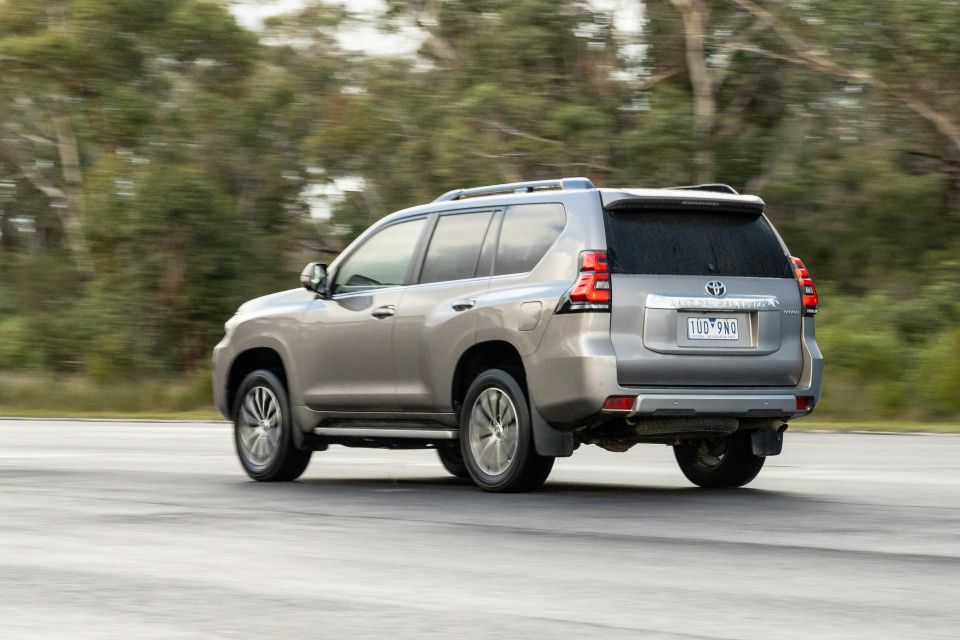
Where it gets a bit ungainly is in its ride. It’s not crashy, thanks in part to air springs at the rear, but it’s a tad floaty. The Prado bobs up and down on even relatively flat surfaces, and gets jostled around somewhat on tram tracks and surface changes.
It feels as though Toyota’s engineers have tried to soften the impacts coming into the cabin but overcompensated, leaving the Prado with too much rebound over expansion joints and uneven surfaces.
Overall, there’s a bit of an old-school feel despite the inherent adjustability of the Adaptive Variable Suspension.
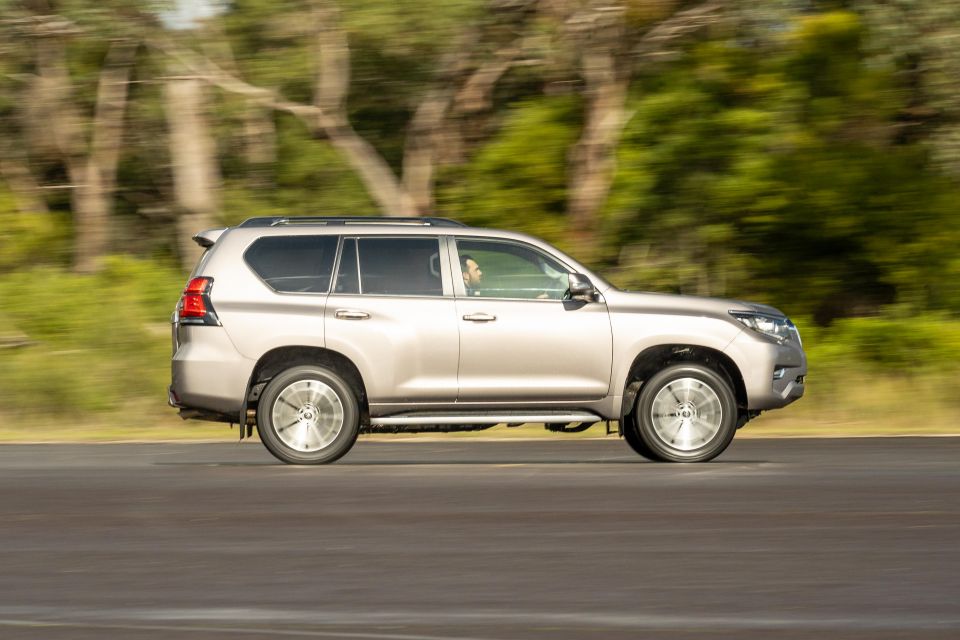
There are no clever steering-based lane assist smarts on board, though there’s a brake-based lane departure alert with yaw control. It only intervenes when you’ve crossed a lane marking, but it’s not as aggressive as some brake-based systems.
If you’re four-wheel driving, there’s a full suite of off-road gear like centre and rear differential locks and crawl control, plus selectable low-range gearing.
Many of these are controlled via large buttons on the centre stack, as is the second start function which, as the name suggests, starts the car in second gear. This helps you take off cleanly when on a muddy or icy surface.
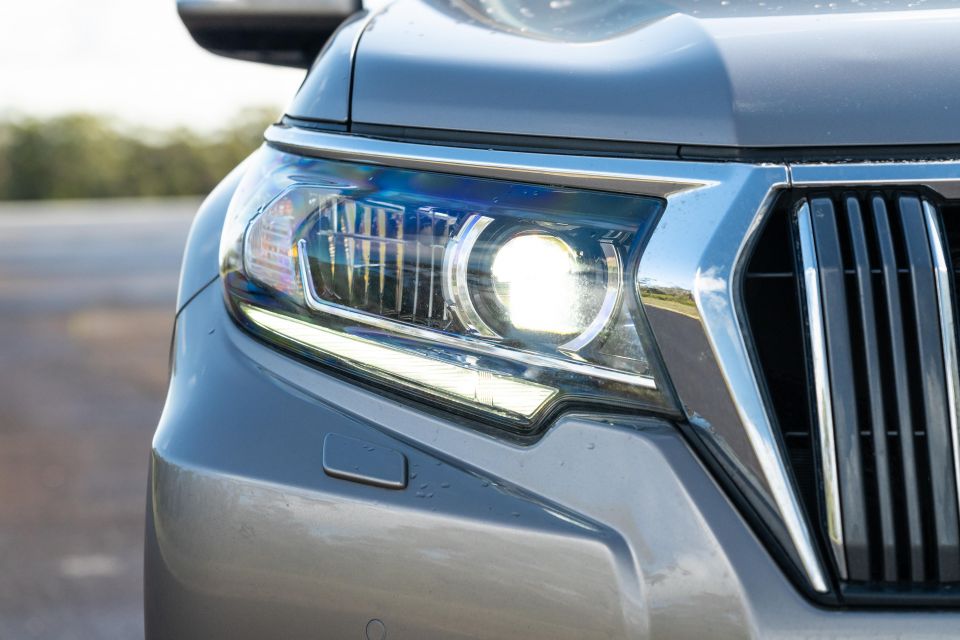



The Prado Kakadu comes standard with the following equipment:
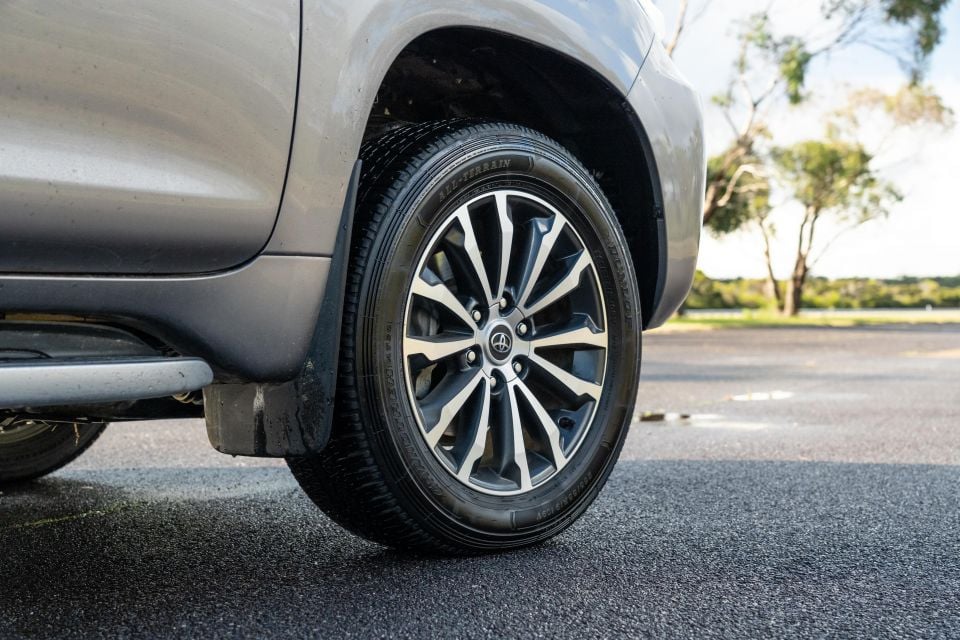

It also comes with the following equipment, found lower in the Prado range:
The Kakadu distinguishes itself from the VX one rung down primarily through mechanical changes like different rear suspension and more off-road equipment.
If off-road ability isn’t as important to you – and considering the Prado VX is already quite capable – there’s logic in pocketing the extra $10,000 or so and going for the VX.
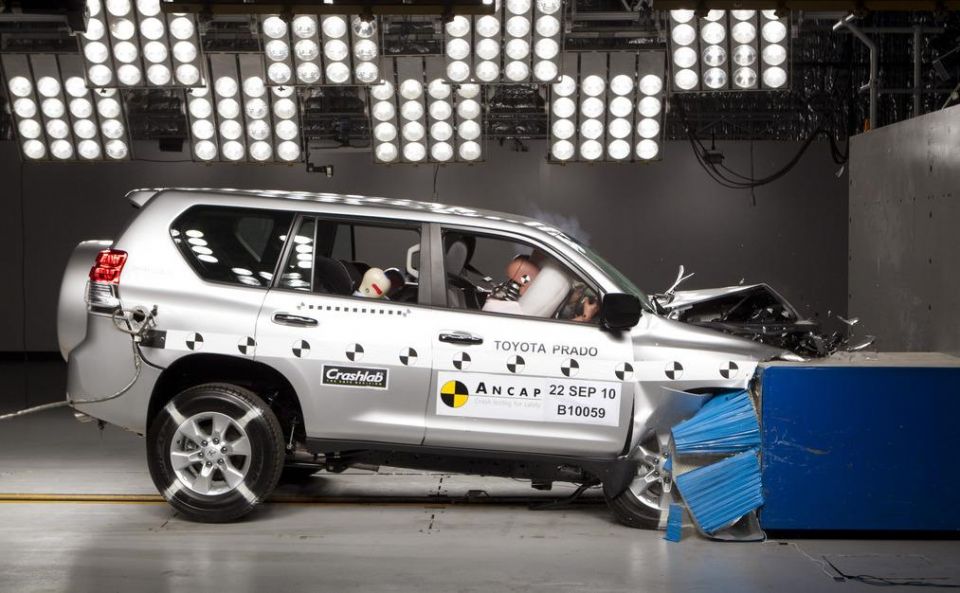
The Toyota Prado wears a five-star ANCAP safety rating based on tests conducted all the way back in 2011.
When it was first tested it achieved an overall score of 35.11 out of 37 against older crash test criteria. It’s unclear how it would perform against the latest, most stringent requirements, and its five-star rating is set to lapse after this year as ANCAP ratings are no longer retained indefinitely.
All models come standard with the following:
The GXL adds rear parking sensors, while the VX adds front parking sensors and a surround-view camera.
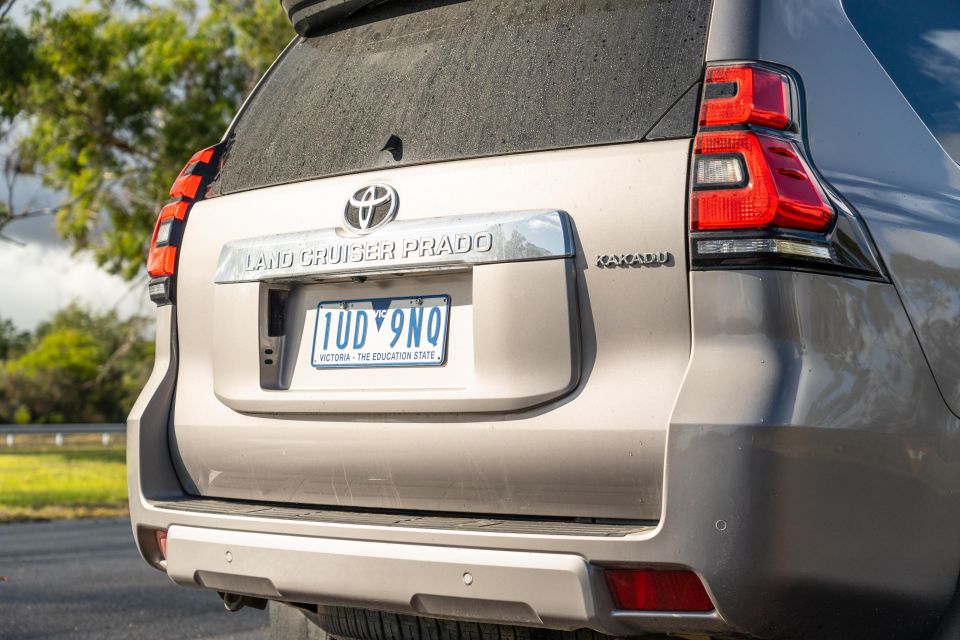
Toyota offers capped-price servicing, but the Prado’s intervals are frustratingly set at six months or 10,000km. The first six services are capped at $260 each, and the Prado is backed by a five-year, unlimited-kilometre warranty.
In contrast, an Everest has the same warranty but longer intervals of 12 months or 15,000km, with the first five services capped at $329.
Toyota service pricing tends to be quite reasonable, but the Prado’s short intervals drastically undermine the value equation.

The Prado may be an oldie, but it’s still a goodie with plenty to recommend it for.
Despite some hidden switches, dated infotainment and poor camera resolution, its interior has a considerably more premium feel than any of the ute-based SUVs – though the Everest slams it when it comes to connectivity.
Its third row is little worse than most rivals bar the Jeep Grand Cherokee L, but its one-time arch-rival has ceded plenty of ground by dropping its diesel engine.
The Prado’s diesel is no powerhouse, but it’s much better than it used to be and has sufficient grunt and refinement. A somewhat floaty ride aside, the Toyota proves comfortable to drive.
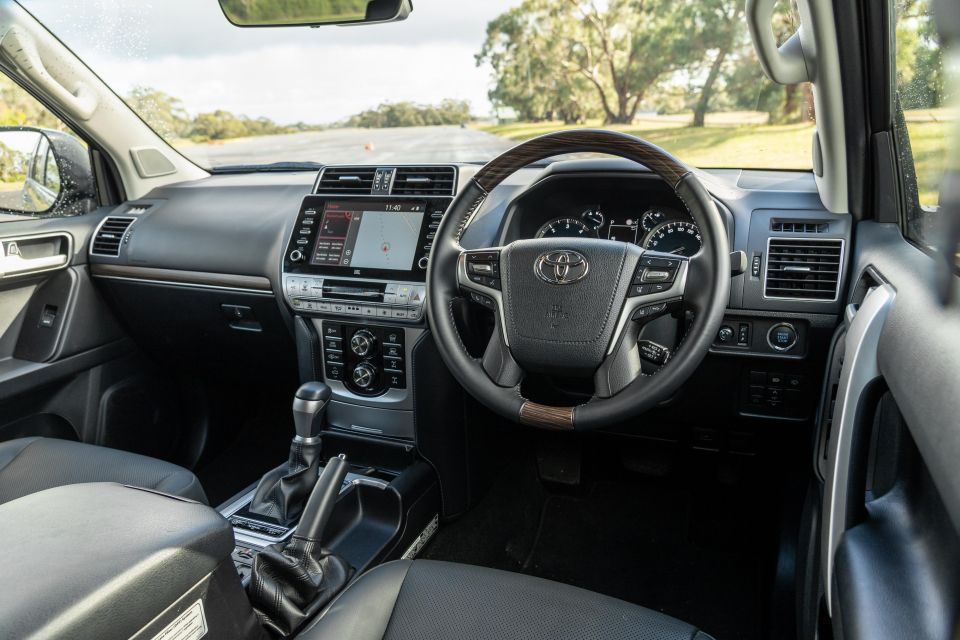
Toyota’s dealer network is expansive but the servicing intervals are much too short, something that can’t be said of its rivals.
Indeed, the spectre of the new Everest looms large over the Prado in almost every aspect, from cost of ownership to performance and connectivity. The Prado Kakadu has some mechanical equipment its foe can’t offer, like crawl control and adaptive suspension, but it’s down on power and torque and the gulf in fuel economy is more of a narrow strait – at least on paper.
In isolation, the Prado Kakadu still has showroom appeal, though we reckon most buyers would be better served by the more affordable VX. But the real test of the Prado’s standing in the market will be to put it head-to-head with its newest and greatest threat.
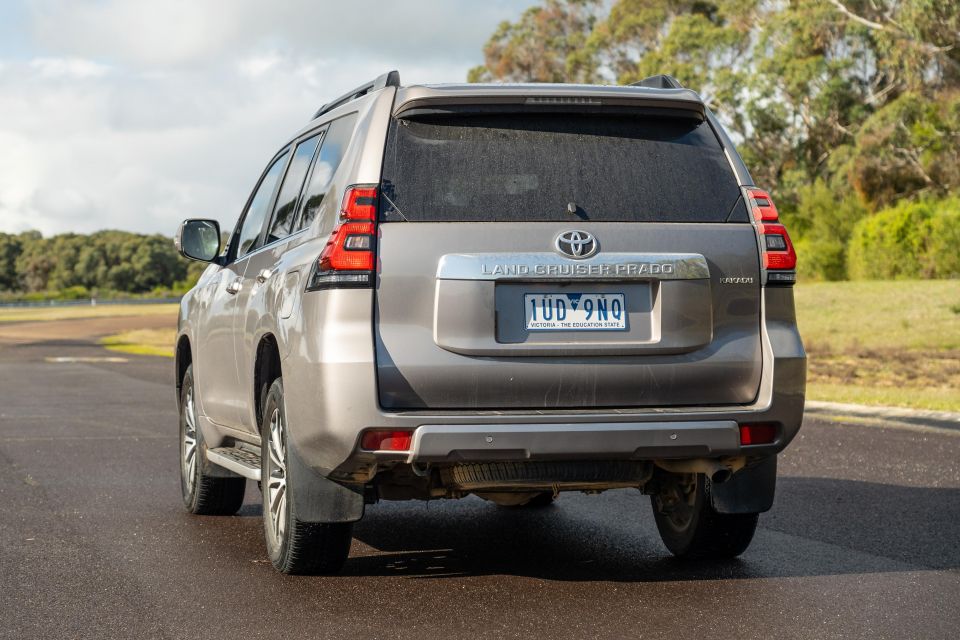
Where expert car reviews meet expert car buying – CarExpert gives you trusted advice, personalised service and real savings on your next new car.
William Stopford is an automotive journalist based in Brisbane, Australia. William is a Business/Journalism graduate from the Queensland University of Technology who loves to travel, briefly lived in the US, and has a particular interest in the American car industry.


Max Davies
2 Months Ago


Matt Campbell
1 Month Ago
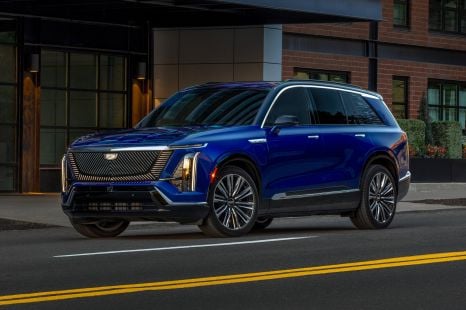

William Stopford
1 Month Ago
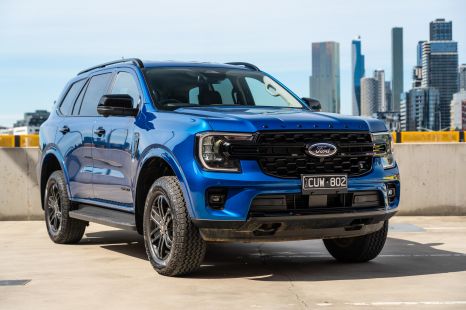

Josh Nevett
1 Month Ago


Max Davies
23 Days Ago


Max Davies
23 Days Ago